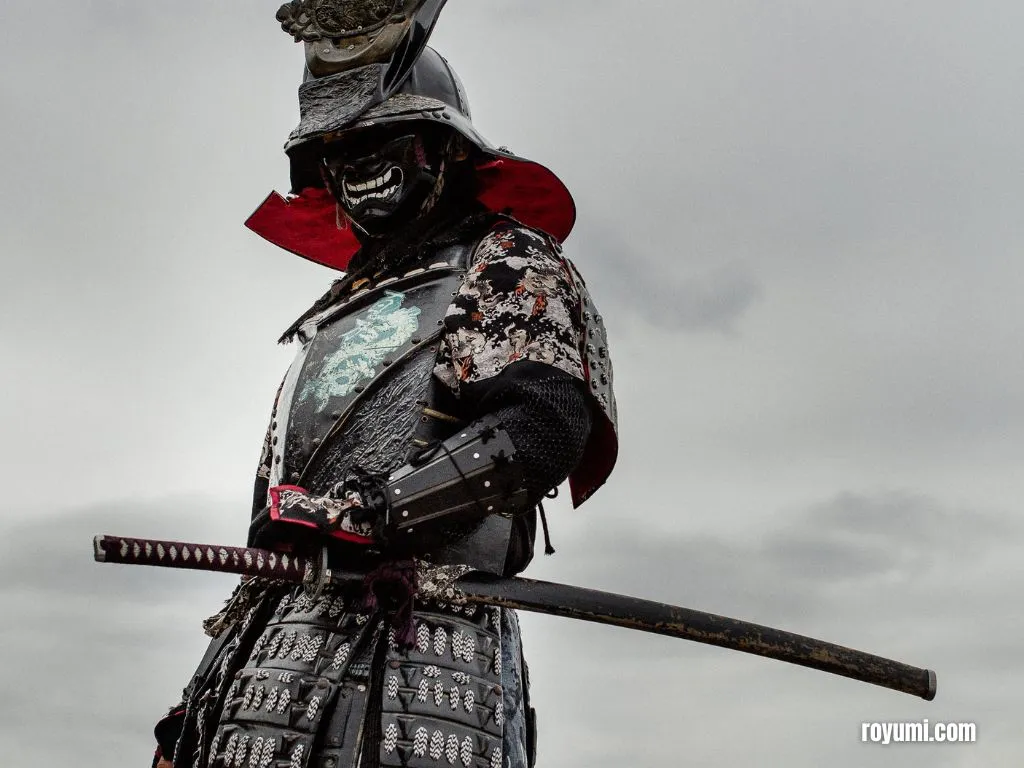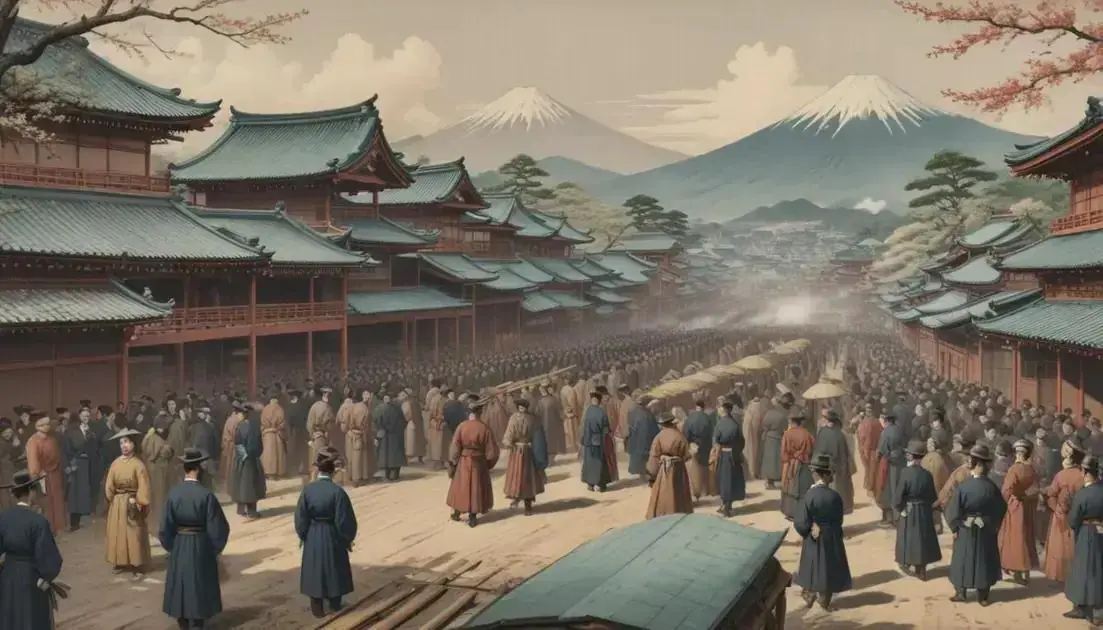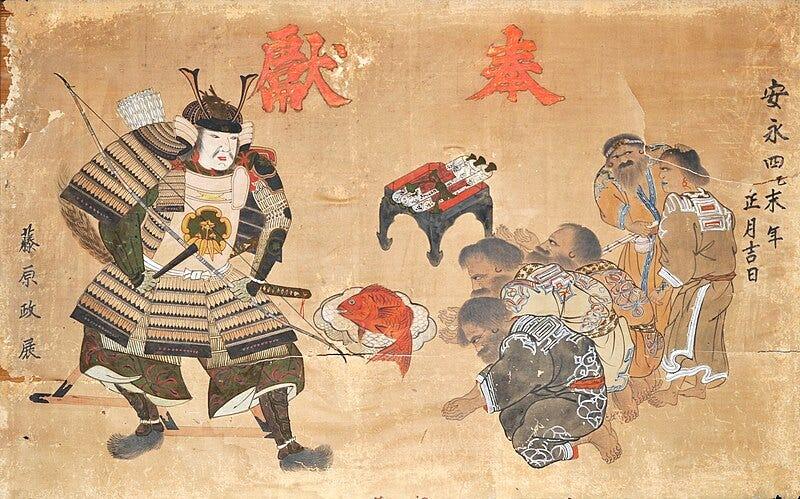
The Fascinating History of the Samurai and Feudal Japan
The samurai, the elite warrior class of feudal Japan, represent a captivating chapter in world history. Their unwavering loyalty, rigorous code of conduct (Bushido), and exceptional martial prowess have captivated imaginations for centuries. This exploration delves into the samurai’s rich history, from their humble beginnings to their eventual decline, revealing the intricate tapestry of their influence on Japanese culture and society.
I. The Genesis of the Samurai: From Bodyguards to Elite Warriors
The roots of the samurai can be traced back to the 8th century, a period of evolving power dynamics in Japan. The imperial court, recognizing the need for a reliable military force, began recruiting warriors from the provinces, particularly from the eastern regions of Kanto and Tohoku. These early warriors, initially known as bushi (meaning “warrior” or “military man”), served primarily as bodyguards and protectors of the court. Their role, however, was to evolve significantly over the centuries.
The term “samurai,” meaning “those who serve,” reflects the fundamental principle of loyalty that underpinned their existence. These early samurai were not necessarily a unified class, but rather a collection of regionally-based warriors serving various lords. They differed from the aristocratic court nobility in their origins and lifestyle, forging a distinct culture and ethos based on martial skill and loyalty to their masters. Their rise to prominence was inextricably linked to the declining influence of the imperial court, particularly during the Heian period (794-1185 CE). As central authority weakened, regional power struggles intensified, creating an environment ripe for the samurai’s ascent. This period saw the gradual development of a complex social hierarchy within the warrior class, laying the groundwork for the elaborate system that would characterize later feudal Japan. The Heian period witnessed the emergence of powerful clans, such as the Fujiwara, who controlled the imperial court through marriage alliances and political maneuvering, and the rising influence of regional landowning families who relied on their own private armies of bushi for protection and enforcement of their power.
The decentralized nature of power during this era allowed for the growth of private armies loyal to specific clans or lords. This fostered the development of strategic alliances, bitter rivalries, and ultimately, the conditions that would lead to the larger-scale conflicts and the eventual dominance of the samurai class. The establishment of private estates, along with the need to protect those lands and the growing influence of powerful families, accelerated the process of samurai professionalization. The cultivation of martial skills and the honing of loyalty became crucial for survival and advancement within this ever-changing political landscape.
II. The Rise of the Samurai Class: The Genpei War and the Kamakura Shogunate
The 12th century marked a pivotal moment in the samurai’s rise to power. The Genpei War (1180-1185 CE), a brutal conflict between the Minamoto and Taira clans, dramatically altered the political landscape of Japan. This war wasn’t simply a clash of clans; it was a struggle for dominance between the established aristocratic order and the rising power of the warrior class. The Minamoto clan, led by the brilliant military strategist Yoritomo, emerged victorious, signaling the end of the Heian period and the beginning of the Kamakura period (1185-1333 CE).
Yoritomo established the Kamakura shogunate, a military government that effectively superseded the imperial court’s authority. This marked a significant turning point. For the first time, a military leader, the shogun, held supreme power in Japan, with the samurai forming the backbone of his authority. The shogunate’s structure solidified the samurai’s position at the apex of Japanese society, establishing a feudal system in which land was granted in exchange for military service and loyalty. The gokenin system, a hierarchical arrangement of samurai loyal to the shogun, ensured a strong, centralized military structure. This era saw the formalization of Bushido, the samurai code of conduct, further cementing their status and defining their societal role. The Kamakura period established the foundational structure for the feudal system of Japan for centuries to come, with the samurai as its essential component.
III. The Golden Age of the Samurai: Conflict and Cultural Flourishing
The centuries following the Kamakura period, spanning from the 14th to the 16th centuries, are often regarded as the “Golden Age” of the samurai. While characterized by significant internal conflict, this era witnessed a peak in their power, influence, and cultural contributions. The establishment of the Ashikaga shogunate (1336-1573 CE) initially continued the centralized rule, but it eventually descended into a period of chaos known as the Muromachi period (1336-1573 CE). This period was marked by internal strife, power struggles among competing daimyo (feudal lords), and ultimately, the Sengoku period (“Warring States period”).
The Sengoku period (1467-1603 CE) was an era of relentless warfare, characterized by constant battles between ambitious daimyo, each vying for control. This period witnessed the rise of legendary samurai figures such as Oda Nobunaga, Toyotomi Hideyoshi, and Tokugawa Ieyasu, each employing innovative strategies and military tactics to expand their territories and consolidate their power. The introduction of firearms from Europe fundamentally altered the battlefield, requiring samurai to adapt and evolve their fighting styles. The Sengoku period, though a time of constant upheaval and bloodshed, was also a period of significant innovation and military advancement. The development of new fighting styles, the refinement of weaponry, and the rise of new tactics were all crucial factors in this era of almost ceaseless conflict.
This period also witnessed significant advancements in samurai culture. The pursuit of martial arts reached new heights, with the development of distinct swordsmanship schools and the codification of fighting techniques. The importance of strategy, both on and off the battlefield, became increasingly crucial. Samurai also became patrons of the arts, fostering the development of unique artistic styles and contributing to literary and philosophical discourse. This period saw the flowering of Zen Buddhism’s influence, contributing to the samurai’s spiritual and philosophical ideals. While the constant warfare defined much of this era, it was also a time of great creative output and cultural development within the samurai class.
Miyamoto Musashi, a legendary swordsman who epitomized the samurai spirit, thrived during this era of chaos. His Book of Five Rings, a treatise on strategy and philosophy, transcends its martial origins to offer insights applicable to various aspects of life. His life and accomplishments are a testament to the enduring appeal of the samurai ideal, combining martial prowess with strategic thinking and philosophical depth. The Sengoku period saw the refinement and expansion of the samurai’s cultural and philosophical ideals, creating an enduring legacy that continues to resonate today.
IV. The Decline of the Samurai: The Tokugawa Shogunate and the Meiji Restoration
The Sengoku period concluded with the victory of Tokugawa Ieyasu, who established the Tokugawa shogunate (1603-1868 CE), ushering in a period of relative peace and stability. This era, however, marked the beginning of the samurai’s decline. While the Tokugawa shogunate ensured internal peace, it also implemented policies designed to curtail the samurai’s power. The centralized government established a rigid social hierarchy, with the samurai increasingly confined to bureaucratic roles, their traditional military functions gradually diminishing. The peaceful era of the Tokugawa shogunate, while bringing much-needed stability to Japan, gradually eroded the samurai’s military significance. The reduced need for military conflict and the shogunate’s focus on internal control resulted in the samurai’s shift towards less active roles.
The development of new military technologies, such as more effective firearms, further diminished the samurai’s advantage in warfare. Their traditional combat skills, though still highly valued, became less relevant in a shifting military landscape. The increasing power of the centralized government also led to the erosion of their regional autonomy, making them increasingly reliant on the shogunate for their livelihood and status. The samurai began transitioning from a class of independent warriors to one of civil servants.
The Meiji Restoration of 1868 marked the dramatic end of the Tokugawa shogunate and the beginning of modern Japan. The Meiji government abolished the samurai class, instituting a conscript army that was open to all citizens, regardless of social class. This represented a fundamental shift in Japanese society, dismantling the centuries-old feudal system and ushering in an era of modernization and Westernization. The samurai, once the undisputed rulers of Japan, were forced to adapt to a rapidly changing society. Many transitioned into bureaucratic positions, while others sought new opportunities in emerging industries and commerce. The samurai’s influence on society remained, though their martial prowess played a diminished role.
V. The Enduring Legacy of the Samurai: Culture, Philosophy, and Modern Influence
Despite their formal demise as a class, the samurai’s legacy continues to resonate profoundly in Japanese culture and society. Bushido, the samurai code, emphasizing loyalty, honor, self-sacrifice, and martial prowess, remains an important philosophical concept. While its rigid structure may be outdated, the underlying values continue to influence Japanese business practices, emphasizing discipline, loyalty, and dedication. The emphasis on honor and self-sacrifice, elements central to the samurai’s identity, continues to find expression in Japanese culture.
Samurai played a crucial role in shaping Japanese art, literature, and philosophy. Their images frequently appear in paintings, woodblock prints, and literature. They have been immortalized through countless works of art and storytelling, reflecting their enduring status as symbols of Japanese identity. The samurai’s impact on Japanese art is immense, with their imposing figures and weaponry featured prominently in traditional paintings and woodblock prints. Their presence in Japanese literature and theater provides further evidence of their profound cultural impact.
The samurai’s commitment to mastery, both in warfare and the arts, has resonated with generations of Japanese people. The emphasis on constant training, self-improvement, and the pursuit of excellence continues to influence many aspects of Japanese life and continues to inspire many today. The samurai’s history isn’t simply a chronicle of warriors; it’s a testament to the evolution of Japanese society and its enduring cultural values. The ideals of loyalty, discipline, and honor embodied by the samurai continue to shape the Japanese cultural landscape. Their image and values continue to be used in modern Japanese marketing and product branding, signifying strength, honor, and dedication.
The history of the samurai is a complex and multifaceted narrative. They were not simply warriors; they were also scholars, artists, and statesmen who played a crucial role in shaping the destiny of Japan. Their story transcends the battlefield, revealing a deeper exploration of culture, philosophy, and the ever-evolving dynamics of power and society. The legacy of the samurai is far more than just a historical record; it is a living testament to a powerful culture and code that continues to exert its influence on Japan and the world. Their story continues to inspire and fascinate, demonstrating the enduring power of a unique culture, and a legacy that continues to echo across centuries.


